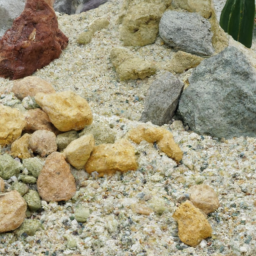How To Rock Landscaping
How To Do Rock Landscaping
The Rock of Ages: How to Do Rock Landscaping
Creating a beautiful landscape with rocks can be both an engaging and rewarding experience. Here, we'll take a look at the step-by-step process of how to do rock landscaping, from selection to installation. But before we dive into the details, let's explore some background on why rock landscaping is important and the basics of select rock types.
Background and Basics of Rock Landscaping
When done right, rock landscaping can bring lasting beauty and charm to your outdoor terrain. Characterized by a natural beauty, landscaping with rocks is the perfect example of eco-friendly practices as it uses natural materials. For proper drainage, rocks may be used to hold more moisture against the wall. Additionally, land that has been landscaped with rocks is better equipped to retain soil and sediment.
To begin your rock landscaping project, it's important to familiarize yourself with some basic facts about rock types and sizes. Generally, there are three options: small rocks, medium-sized rocks, and large rocks. When selecting, consider the shape, texture, size, and color you need to make sure it complements the existing garden, walls, patio, pathways, etc. It is also interesting to note that even a small number of rocks can create a big impact.
Step-by-Step Guide Of How To Do Rock Landscaping
Now, let's look at the specific steps involved in creating a successful rock landscaping.
Step 1: Layout & Design
The initial step in rock landscaping is to plan your layout. First, you will need to imagine what the overall look will be and the kind of plants, trees, or shrubs you would like to add. Decide on the functionality you want the rock landscaping to serve, such as creating a low maintenance wall, adding privacy, or a feature wall. Knowing your goals is the key to designing a successful rock landscape.
Step 2: Selecting Rocks
The next step in the process is to decide on the types of rocks you want to use. As mentioned earlier, typically there are three types of rocks small, medium, and large. You will need to also consider the size, shape, texture, color, and blend of the rocks. Pick rocks with different shapes and sizes to create a visually appealing landscape.
Step 3: Setting the Rocks
Once you have the desired number of rocks, you can start to lay them out in your chosen garden bed. When settling the rocks, be sure to create a design that is both aesthetically pleasing and functional. Cement may be used to hold the rocks in place. Start by laying the larger rocks and use smaller rocks to fill in the gaps in between.
Step 4: Final Touches
After setting the rocks, you can go in for the finishing touches. This includes planting succulents, tropical plants, and other shrubs to make the garden bed look even more attractive. You may also want to use smaller rocks to fill the pathways and other areas to create a seamless look.
Final Word
Rock landscaping is an effective way to create a natural beauty, provide good drainage, and retain soil and sediment. With the right selection and installation process, you can easily create a stunning rock landscape in your backyard or garden.
So, go ahead and explore the world of rocks. Whether you want to build a wall, enhancing a garden bed, or sprucing up your front entrance, rock landscaping can provide a unique charm and character to your outdoor space.
Takeaways
- Rock landscaping can be an eco-friendly way of enhancing your outdoor area.
- To start, plan a layout and select your rocks.
- Set the rocks and add some final touches with plants and smaller rocks.
- Rock landscaping can be both aesthetically pleasing and functional.
With these key insights in hand, you can now explore the world of rocks and create your own beautiful landscape!

Previous Page
